Heroes Within Reach

Elliott Rabin is Director of Thought Leadership at Prizmah: Center for Jewish Day Schools. He is the author most recently of The Biblical Hero: Portraits in Nobility and Fallibility (JPS), which explores the Bible’s conception of heroism and the nature of six leading Biblical heroes. He holds a PhD in comparative literature with a specialty in Hebrew literature from Indiana University.
We read the Bible with the understanding that many of the characters described are our heroes, our Jewish archetypes. We pore over every action, every word, for insight into their thought and character, insight that can inform the same in us. These are not dry annals of the lives of figures from the distant past; these people are as alive today as we are—alive within us, within our synagogues and culture, because we study them so intensively and know them so intimately. Each of us knows the stories so well, that we know what happens between and behind the words.
What is a Hero?
But what does it mean to consider them heroes? In what sense does, or doesn’t, the Bible portray them as such? And more importantly, how does the Bible express what a hero is, and what makes someone heroic?
Perhaps we should begin with a contrast to heroes in classic Greek literature. There, a hero is a man (uniquely) of extraordinary strength and courage, someone not only favored by the gods but half a god himself. Despite their elevated status, they each have a weakness, an “Achilles heel,” the part of them that is human and therefore renders them vulnerable.
In the Biblical concept, there are no parallels to this idea as there is no concept of a demi-god. In fact, all Biblical characters are entirely mortal and fallible. It’s not just that they make mistakes or show weaknesses. They are immersed in situations—what we would call “real-life”—that are often complex, troubling, without simple options for extrication and moral clarity.
While reducing the reach of human accomplishment significantly below divinity, the Bible does not eliminate the possibility of human heroism. Quite the opposite: it sets the table for a different, more human-scale model of heroism, placing it within reach of a far broader swath of humanity. In the Bible, it’s not the king who’s the hero, at least not by virtue of being king, nor the warrior for fighting in battle. In fact, because the warrior-king is most at risk of turning himself into a god, he is most likely to be watched, to be distrusted, to be warned, and delimited in his power. Biblical heroes emerge from the common person—the shepherd, the barren wife, the bereft father, the stuttering rebellious son—who, at great personal effort and often danger, even risk of life, performs an action to help other people. Moses kills the Egyptian taskmaster, and Esther defeats Haman’s plot.
Jewish study of Biblical characters trains the mind to not rest satisfied with simple hero-worship. The Bible ensured that even the greatest heroes, such as Moses and David, were not shown without their significant blemishes. Our tradition has us ask questions of them. Was Sarah correct in her harsh treatment of Hagar? How do we deal with Jacob’s deception of his brother and father? Was Joseph justified in prolonging his brothers’ and his father’s agony? How are we to understand Esther’s reluctance to approach the king?
In the Bible, there are at least three essential conditions for someone to become a hero.
- The person’s character: heroes must have some quality within them, however latent, that can enable them to rise to greatness.
- Circumstances: the person must be in the right place and time that calls forth their heroic action.
- There must be someone who perceives what the person has accomplished, who recognizes within it the aspect of heroism, and who names the person as a hero. A hero does not fall alone in a forest; he or she needs acknowledgment.
Because the Bible substantially widens the range of people whom we might think of as heroes, it opens up the idea for the way that we think about heroes today. Certain events in modern times have brought forth portrayals of many different people, and even classes of people, as heroes. In the 9/11 attacks, these included the firefighters who risked their own lives, the co-workers who stayed in the tower to support a colleague in a wheelchair, and the people who cleaned the rubble for months. During Covid, it was the “front-line workers,” the medical professionals who lived in emergency rooms for days at a time not knowing if they would get the disease and wind up next on the ventilator. Or the supermarket employees, wearing inadequate masks and stuck inside buildings which people feared were incubators of the plague.
Since October 7th, our heroes are similarly broad. They are the soldiers of the IDF, men and women battling brutal terrorists while trying to maintain their ethical ideals under incredibly trying circumstances; the spouses and families struggling to hold everything together while their soldiers are away often for months at a time; the multitudes of commonfolk supporting neighbors, volunteering to help farmers and children of displaced families; the brave non-Jews who choose to speak out against the violence and hypocrisy of our enemies. All of these and many more are today’s heroes as they meet the criteria established above—and it is the Bible that helps us see them as such.
Teaching About Heroes
According to Plato, heroes are an essential component of education. Protagoras, in Plato’s dialogue of the same name, says that students should memorize stories of heroes so that they “may imitate or emulate them and desire to become like them.” Heroes give young people an early sense of who they would like to become. They enable youth to shape their character, their thoughts, and their actions after a “grown-up,” igniting their excitement and ambition and helping them transform themselves into a mature person who embodies their society’s ideals.
I believe that Plato was correct in asserting that heroes are an indispensable part of human development. Children need heroes and will find them—in movies, comic books, among singers, and more. Yet given our perspective based on the Bible, in which all heroes are very human, I believe that our role as teachers is to help students reflect upon their heroes—not to remove their statues and melt them down, but not to keep them on a pedestal either. We should give students the tools and dispositions to be able to articulate what they admire about heroes and to be able to criticize them as well. Perhaps the greatest gift we can give students today is the ability to see nuance, to evaluate behavior in moral complexity, to strive for truth, and be able to wait for it until the facts and contexts are studied. That kind of patient assessment of heroes is precisely what the Bible and the Jewish traditions of interpreting it empower us to do.
Instead of being distant heroes requiring reverential treatment, our Biblical heroes and heroines jump off the page as we probe them, argue over them, and learn from them anew every time we open the book. What would happen if we enable students to adapt our treatment of Biblical heroes to their own heroes of today? Teachers can take Jewish traditions of close interpretation and give students tools to evaluate people today who are considered heroes.
The Heroes for Life project enables students to select a fallen Israeli soldier and treat them as a hero precisely in the way just described. Students study the soldier’s life and values, select something that the soldier did, and craft a volunteer project inspired by that act, to be performed by the entire school. While the soldiers are chosen as heroes because they served and died in war, as traditional heroes, they are memorialized for their kindness and other peaceful qualities, which students use as models for their own behavior.
Students of all ages have heroes; often a child’s earliest hero is a parent. Hence, it is never too early to empower students to talk about their heroes and to think about them. Who are their heroes? What qualities or actions make them heroes? How do their heroes influence their thoughts and behaviors? Have their heroes changed over time? These kinds of questions can engage students at any age.
The same kind of approach can be taken when discussing Biblical heroes. Jewish tradition understands that heroes are not presented as perfect; they are heroes because they can accomplish great things even with, not just despite, their imperfections. Teachers can discuss with them how ideas about heroes change among cultures and times, what we expect of contemporary heroes, and whether any, or which, Biblical heroes would be considered such today.
As the students get older, teachers should not shy away from the more challenging characters and their stories. Here’s one example of digging deeper into some of the troubling Jacob narratives. Many have difficulty accepting Jacob as a role model, but a careful reading reveals that he possesses characteristics of one the world’s most popular hero types, the trickster (think of Odysseus, Wile E. Coyote, and Reynard the Fox). Does Jacob appear any more heroic by these similarities? Does the Biblical narrator indicate any judgment of Jacob, positive or negative? Are there situations that call for deceit? Consider the famed spy, Eli Cohen. Under what circumstances is acting deceitfully necessary, even laudatory? Do Jacob’s circumstances meet the students’ criteria? Do any of these parallels change our assessment of Jacob as a hero?
Conclusion
Heroes are educationally important, but the concept of a hero as portrayed in the Bible should not be confused with the Greek model. Heroes are not perfect, and perhaps it is because of their imperfections that they can serve as role models for all of us. In their early years, students are primed for heroes. As educators, we can help transform immature hero-worship into a mature understanding of who and what a hero is, and how they can be models to inspire us despite or because of their flaws. Some of the tools for accomplishing this are clarifying what heroes are and why they matter, expanding our notion of who a hero can be and what makes people heroic, and putting Biblical heroes in conversation with heroes from other contexts and cultures.

Elliott Rabin is Director of Thought Leadership at Prizmah: Center for Jewish Day Schools. He is the author most recently of The Biblical Hero: Portraits in Nobility and Fallibility (JPS), which explores the Bible’s conception of heroism and the nature of six leading Biblical heroes. He holds a PhD in comparative literature with a specialty in Hebrew literature from Indiana University.

From The Editor: Winter 2025
It is one of the oldest literary collections ever written and still very much in circulation. Public readings (and celebrations) of its text are practiced in nearly every synagogue in the world in a regular, fixed cycle. It has been analyzed and studied by religious luminaries, academic scholars, and lay people, and has been studied and taught more times than we can count, with hundreds if not thousands of published commentaries. It plays a central role in all of our lives. One would think that by now we would have a pretty clear idea of what content from Tanakh should be taught and how it should be approached pedagogically at various age levels. And yet, a mountain of anecdotal evidence reveals that there is a huge range in what is taught, why it is taught, and how it is taught.

Tanakh Hats for Meaning Making: A Multi-Perspective Approach to Biblical Text Study
In our ongoing quest to enhance Tanakh education, we’ve developed a fresh approach that energizes both teachers and students while promoting diverse interpretations, critical thinking, and collaborative learning. Inspired by Edward de Bono’s Six Thinking Hats, this method encourages learners to view Tanakh texts from multiple perspectives, offering deeper understanding and fostering connections between foundational Jewish texts and modern life. The Tanakh Meaning Making Hats (TMM Hats) approach equips students with various interpretive tools to explore familiar perspectives and discover new ones, building understanding through both familiar and novel frameworks. This method, grounded in constructivist learning theory, enables students to construct knowledge actively, allowing them to examine texts from varied angles.

From Consumption to Production: Equipping Students to Create Torah
In the realm of Tanakh education, there is a tendency to focus on the consumption of Torah knowledge, where students engage in the study, understanding, and analysis of sacred texts. While amassing a critical base of knowledge is undeniably essential, I believe that shifting from students-as-consumers to students-as-producers—in which students not only absorb the teachings but also create and contribute their own interpretations and insights that can be shared publicly—is equally essential. How can we teach students to produce a deep analysis of Torah and not just consume others’ commentary? How do we encourage students to think for themselves while teaching other valuable lessons in the process?

Innovating Teaching Tanakh
What I observed one day in my visit to an English Language Arts (ELA) classroom last year opened my mind to completely new ways of teaching Tanakh, leading to greater student engagement.I work at a pluralistic elementary school that emphasizes growth mindset and continued development for each educator. One specific policy that helps educators learn from each other is the requirement to visit at least two other classrooms every semester. This routine fosters a genuine culture of professional growth, where teachers share ideas, observe varied teaching methods, and offer constructive feedback. I’ve always found these observations beneficial, but one visit left a lasting impact on my approach to teaching Tanakh. Stepping into Mrs. Michelle Petrova’s 6th grade ELA classroom, I was greeted with an incredibly vibrant atmosphere.

Teaching the Halakhic Sections of the Torah
Much of the discussions we find about teaching Humash focus on the narrative portions—Genesis, the story of the Exodus, the wanderings in the wilderness. To a large extent that makes sense, as they provide students with their origin stories—so critical for building the foundations of identity—and are inherently interesting, as stories tend to be. That being said, there is another half of the Torah, whose nature is primarily legal. While some skip it intentionally or somehow “don’t get around to it,” for others it is no less important to teach, even though the content often doesn’t lend itself easily to grab and hold the students’ attention. As with any teaching, we must first identify what we want to achieve before we can think about how we want to do it.
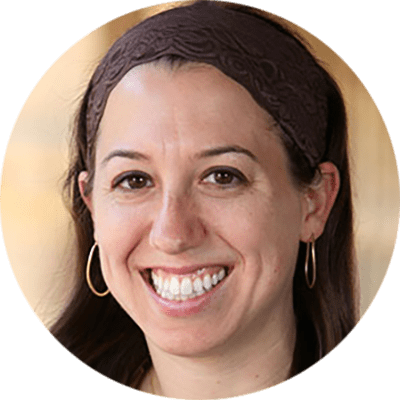
Teaching Tanakh: A New Perspective on Pedagogy
As many teachers of Tanakh know, the Tanakh classroom serves as a crucible for interpreting sacred texts, particularly in theologically and denominationally diverse day schools, camps, and beit midrash settings. The question I wish to explore here is: how do Jewish educators navigate the complex landscape of multiple orientations towards Tanakh that they might find in the seats of their classroom and make sure to empower all their students as interpreters? Central to my own Tanakh teaching, at almost every grade level, in almost every type of day school context, is the realization that my students don’t read Tanakh according to the same orientations or literacy practices, but it would be helpful if they did—at least for the duration of my class.
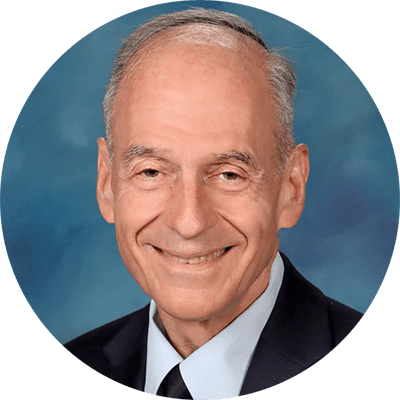
Tanakh Study and Reader Response
“My students insist on translating every pasuk (verse) into English and then using their translation to answer the questions. How can I get them to work from the makor (original text)?”“When I give in to their learned helplessness and teach them an interpretation, they can’t identify the problem in the pasuk that the interpretation comes to solve, and then they get stuck on the one understanding I presented and won’t consider an alternative. How can I help them think for themselves?” “I want my students to identify with the avot (patriarchs) and imahot (matriarchs) and learn from their example. But they somehow can’t relate to them as role models. What am I doing wrong?”Sound familiar? For years these complaints were a constant refrain from my Tanakh-teaching colleagues.
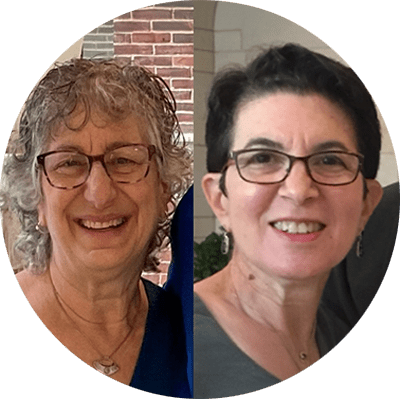
Vision, Lenses, and Focus: Bringing Clarity to Tanakh Curriculum with Standards
Any Tanakh text, whether narrative or legal, contains an abundance of ideas, elements, and complexities, and has the potential to raise countless questions. How does a school community decide which of them to pursue?Nechama Leibowitz, quoted by Shmuel Peerless in To Study and to Teach: The Methodology of Nechama Leibowitz, wrote that educators have……to decide what to leave out and what topics should not be touched, because it is pointless to tackle a number of different topics and problems superficially or incidentally in a chapter. It is preferable to concentrate on just a few topics, but in depth (p. 15). Standards serve as powerful tools for deliberating about a vision for Tanakh education and for shaping Tanakh curriculum once the school’s vision is clear.

Teaching Tanakh to Weaker Students
In my roles as a Tanakh teacher and an instructional coach, my goal is to inspire Tanakh students to become engaged, proud, and even passionate Jews, fluent in Jewish literacy and deeply committed to the future of Jewish education and community. This goal is daunting under the best of circumstances; when teaching Tanakh to weaker students, it becomes more so. In this article I will outline some of the most ubiquitous challenges that arise from teaching Tanakh to weaker students and offer suggestions for navigating them based on my own experience as well as conversations with other educators and research from the field. I believe that navigating these challenges requires both modifications in practice and shifts in mindset, and I will outline each of them.
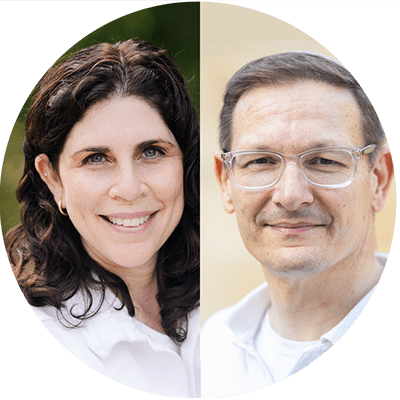
Student-Centered Learning in the Tanakh Classroom
For the past decade, educators have been using the term student-centered learning (SCL) but still finding it tricky and challenging to apply to the Tanakh classroom for a variety of reasons. One is the amount of time teachers must dedicate not only to teaching content but also to developing textual reading skills. Another is that teachers might feel reluctant to engage in a pedagogy they feel allows for too much free thinking and not enough respect for the mesorah, classical commentators, and tradition in general. Here we offer tips and strategies for how to introduce SCL into the Tanakh classroom in large and small ways. Differentiation and Social-Emotional Learning Are you differentiating in your classroom? Great! That’s one time-tested way to employ SCL in the Tanakh classroom.

Outside the Box: A Values-Based Approach to Parashat Hashavua
Tanakh in dialogueWhat position does the Tanakh occupy in the life of an early teen? For many, the Tanakh resides in the mental box into which school is commonly placed—a box of academic pursuits, Hebrew language and grammar, Jewish history and Biblical knowledge. There is nothing innately wrong with this, to the contrary, Tanakh study certainly can and does involve these important elements. But a missed opportunity arises when compartmentalisation precludes Tanakh from forming dialogue with the other “boxes” that rise to prominence in the early teen years.Early teenagehood is often marked by questioning and exploration as students begin a journey of seeking to understand that which may have previously gone unquestioned.

Building Tanakh Skills One Step at a Time With Manipulative Materials
“Give a man a fish,” the saying goes, “and you feed him for a day. Teach a man to fish and you feed him for a lifetime.” At Netivot, we have developed a Tanakh program that gives each child the personalized gift of feeding himself for a lifetime. The Montessori method is predicated upon the idea that each child, if provided developmentally appropriate opportunities, will inherently learn and grow and master at each phase of development according to his own individual needs. For this reason, in our classrooms, the expectation is not for children to memorize translations of text “chorally,” but rather to develop individually the skills to translate for themselves. Using key elements of the Montessori method, our students build a series of skills that allow them to tackle pesukim independently.

Bringing Nechama Leibowitz Into the Classroom
The written legacy of Nechama Leibowitz, in her gilyonot and books, has served and continues to serve as the basis for Torah study for many serious students of parashat hashavua, Tanakh, and parshanut. Her teaching methodology, as experienced by one of the authors of this article in 1988-89, in her weekly classes in her apartment in Jerusalem and in her weekly shiur at the Gruss Kollel, served as a model for how to teach Torah. Certain elements have been adapted, but we have found that her principle of encouraging independent thinking and individualized feedback gives students in middle school a personal connection with the text and empowers them to continue in their Torah study with positivity and self- assurance.
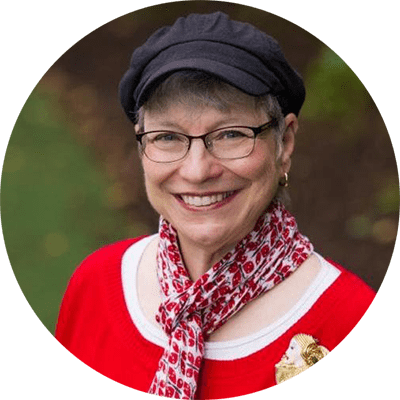
Opening the Middle School Window to Midrash
A number of years ago, when I was teaching the sections in Genesis about Abraham and Sarah to a girls’ middle school class, one of my students raised her hand and said, “I don’t like how much is missing in the Torah.” I asked her what she meant and she replied, thinking like a typical middle schooler, “Like, what did Abraham and Sarah talk about at night when they were just sitting around their tent?” After responding facetiously that Sarah probably asked Abraham what he thought about her new burka, I took the moment to answer the class seriously. This was a wonderful opportunity to deeply introduce my students to midrash as one way to fill in the “blanks” in the Torah text, to delve into the “spaces” in the text, and to teach us moral messages with which to inform our own lives.
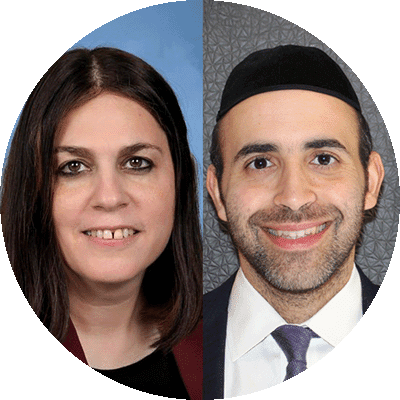
The Barkai Method for Teaching Humash
In the introduction to his book Who Knows Twelve, Rabbi Berel Wein explores a troubling phenomenon: the growing disconnect between the Jewish people and their sacred texts. Whatever the causes for its decline may have been, many Jewish day schools today are attempting to reinvigorate the study of Tanakh, recognizing its fundamental role in Jewish identity and education. Maimonides codified the necessity of studying Tanakh in Hilkhot Talmud Torah (1:7), asserting that it is a crucial component of Jewish life. Today, there is a growing recognition of the need to revive these ancient texts, which hold profound significance for Zionism, community, ethics, spirituality, identity, and much more. One noteworthy example of this revival is the Barkai educational system, developed in Israel by Rav Dan Be’eri more than 40 years ago.
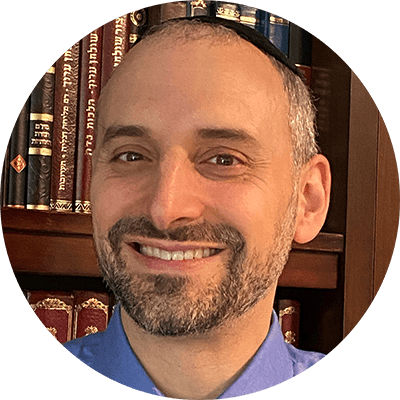
Introducing Sod Into the Tanakh Classroom
In my years of teaching Neviim and Ketuvim, one of my overarching goals was for students to gain an appreciation of why specific commentaries approached the same text differently. I spent significant time on both peshat and derash approaches, highlighting the strengths and weaknesses of each interpretation’s handling of textual issues. One experiment with introducing sod resonated deeply with some of the students and complemented the other work we were doing. I share that experiment here. Sod (literally, secret) is a mode of hermeneutical interpretation that sees the characters and storyline as being symbolic of fundamental themes. Although definitions of sod usually include mysticism, the relation to Kabbalah is only that sod reflects an interpretation that directly addresses giving insight into our relationship with God.
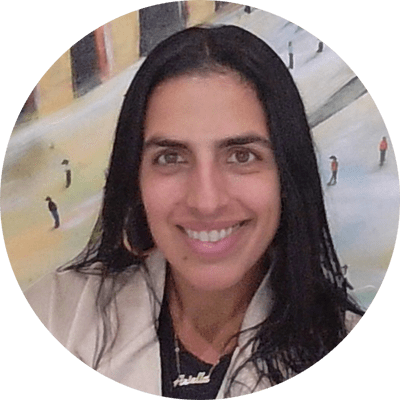
Tanakh as a Tool for Building Identity
Jewish tradition holds Torah teachers in high esteem, viewing them as more than just conveyors of knowledge. They are seen as spiritual and moral guides, shaping the character and identity of their students. In The Lonely Man of Faith, Rabbi Soloveitchik emphasizes that the role of the Torah teacher goes beyond intellectual instruction; they facilitate a divine encounter, guiding students toward a deeper connection with God. The Talmud (Bava Metzia 33a) elevates the honor due to a Torah teacher above even that of one’s parents, as the teacher introduces the student to the “world to come” through their instruction—a profound form of giving life. These texts paint a picture of the Torah teacher as a builder of Jewish identity, imparting values that help shape a student’s character and moral foundation.

Tanakh as Our Story
Tanakh is the story of the Jewish people. This basic component of our identity and our tradition has tremendous spiritual and educational power which, unfortunately, is often untapped. In the following essay, we aim to show how this idea of Tanakh as the grand narrative of the Jewish people can be developed into a powerful educational opportunity. In tapping into Tanakh’s central narrative feature, we are not merely making Tanakh more interesting for our students. Since the times of Moses, the Jewish people has known that a good story does more than just pique an audience’s interest. In the words of Rabbi Sacks, “The Israelites had not yet left Egypt, and yet already Moses was telling them how to tell the story. That is the extraordinary fact. Why so? Why this obsession with storytelling?
Reach 10,000 Jewish educational professionals. Advertise in the upcoming issue of Jewish Educational Leadership.







My paper (see link) shows Abraham’s heroic side was his courage to doubt, learn, and grow. https://www.academia.edu/86095580/Isaac Bound